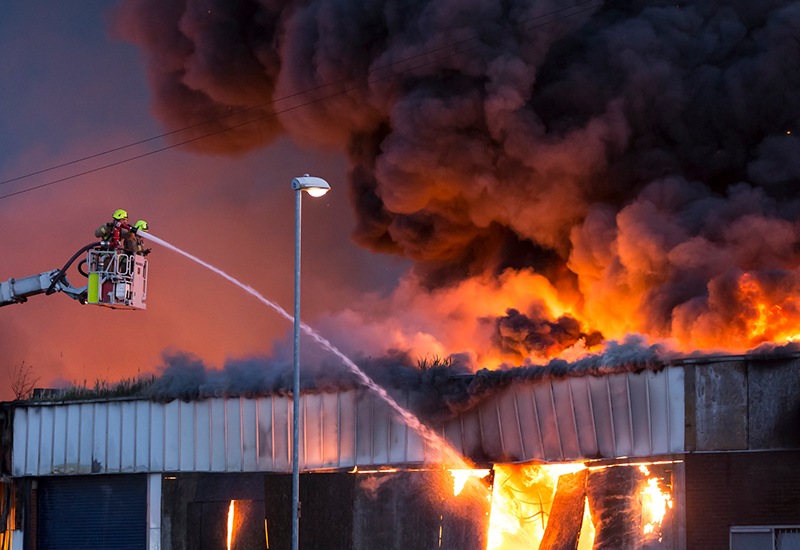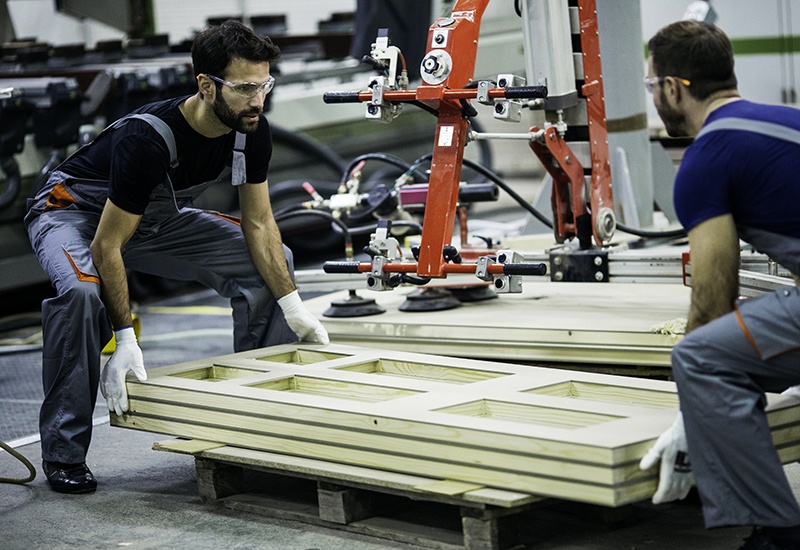Seven Top Considerations for Fire Safety in the Workplace

The past year has seen some horrific fires break out in homes and workplaces across the United Kingdom, from the tragedy of the Grenfell Tower to the blazes in a Primark store in Belfast and the School of Arts in Glasgow.
And it is not just buildings that have been affected, with this summer also seeing fires ravage the Manchester Moorlands.
Fires can be devastating, leading not only to the loss of life but the destruction of businesses, property and local wildlife.
They can be started accidentally, by malicious acts, from faulty equipment, or the incorrect storage of hazardous substances.
In town or country, home or workplace, office, factory or farm – fire safety management must be in place to minimise the risk of a fire starting and spreading.
What does the law say on fire safety for employers?
There are laws which stipulate what an employer must do in relation to fire safety. The Regulatory Reform (Fire Safety) Order 2005 covers general fire safety in England and Wales.
In Scotland, requirements on general fire safety are covered in Part 3 of the Fire (Scotland) Act 2005, supported by the Fire Safety (Scotland) Regulations 2006.
In the majority of premises, local fire and rescue authorities are responsible for enforcing this fire safety legislation.
The Health and Safety Executive (HSE) has enforcement responsibility on construction sites, for nuclear premises, and on ships under construction or undergoing repair.
What aspects of fire safety is an employer responsible for?
Employers (and/or building owners or occupiers) must carry out a fire safety risk assessment and keep it up to date.
Based on the findings of the assessment, employers need to ensure that adequate and appropriate fire safety measures are in place to minimise the risk of injury or loss of life in the event of a fire.
To help prevent fire in the workplace, the risk assessment should identify:
- what could cause a fire to start, incl. sources of ignition (heat or sparks) and substances that burn
- the people who may be at risk of a fire
Once you have identified the risks, you can take appropriate action to control them. Consider whether you can avoid them altogether or, if this is not possible, how you can reduce the risks and manage them.
What practical measures can employers put in place?
There are lots of measures that can be taken to reduce the risk of a fire starting. The following measures are examples and are by no means an exhaustive list.
1. A Fire Evacuation Plan
A fire evacuation plan should be created which tells everyone what to do if the alarm sounds and where to go in the event of a fire.
This evacuation process should be practiced to make sure all staff are aware of what to do. It also needs to include things like whether equipment needs to be switched off.
Designated fire marshalls should be appointed to aid in the evacuation and to check certain areas to make sure everyone is out.
Evacuation plans will vary in complexity depending on the nature and size of the business. For example, residential homes and schools may have very detailed evacuation plans which may include horizontal or phased evacuations.
The plan should also include who will call the fire brigade, how to call them, the address of the premises and any specific information such as location of dangerous substances on site.
2. Fire Detection System(s)
Fire detection systems such as alarms need to be tested on a weekly basis to ensure all call points are working and the alarm can be heard throughout the premises.
The alarm systems also need to be serviced and maintained, and smoke and heat detectors also need to be maintained and batteries replaced.
3. Fire Fighting Equipment
Fire fighting equipment such as extinguishers also need to be serviced and maintained and staff trained to make sure they are not used as door props or misused in any other way.
Other fire suppression systems such as sprinklers also need to be serviced and maintained.
Staff should be given instruction and training on how to use fire fighting equipment and to only use it if it is safe and appropriate to do so otherwise to evacuate and wait for the fire brigade.
4. Air Conditioning Units
Air conditioning units are becoming more frequently used both in commercial and domestic settings. Whilst they keep our homes and work places cool in summer they can also be a real risk of fire and of aiding fire spread. All units must be serviced and maintained to prevent wear and build up of dust. There also needs to be a system in place that will shut the air conditioning units down in case of a fire to prevent its spread.
5. Electrical Equipment
All electrical equipment and installations should be designed, constructed, installed, maintained, protected, and used to prevent danger. Get a qualified electrical contractor to carry out installation and repairs to electrical equipment and fittings.
Fixed wiring testing of a commercial property should be carried out every five years and remedial actions identified completed.
6. Good Housekeeping
Good housekeeping will reduce the risk of a fire starting by ensuring all waste is cleared away and stored correctly. For example, any flammable liquids need to be stored in a labelled container and kept away from sources of ignition, and waste needs to be stored correctly and disposed of in a safe manner.
All escape routes and final exits must be kept clear at all times, while routes must not have lots of combustibles along them.
7. Keeping Staff Informed and Trained
Staff should be given information, instruction and training on fire safety, and should be aware of how to prevent a fire starting and how to prevent it spreading.
Staff also should be vigilant and aware of any suspicious behaviour and report it immediately in line with company procedures.
All premises should also have a smoking policy in place with designated areas for smokers to use and receptacles for the safe disposal of smoking materials.



